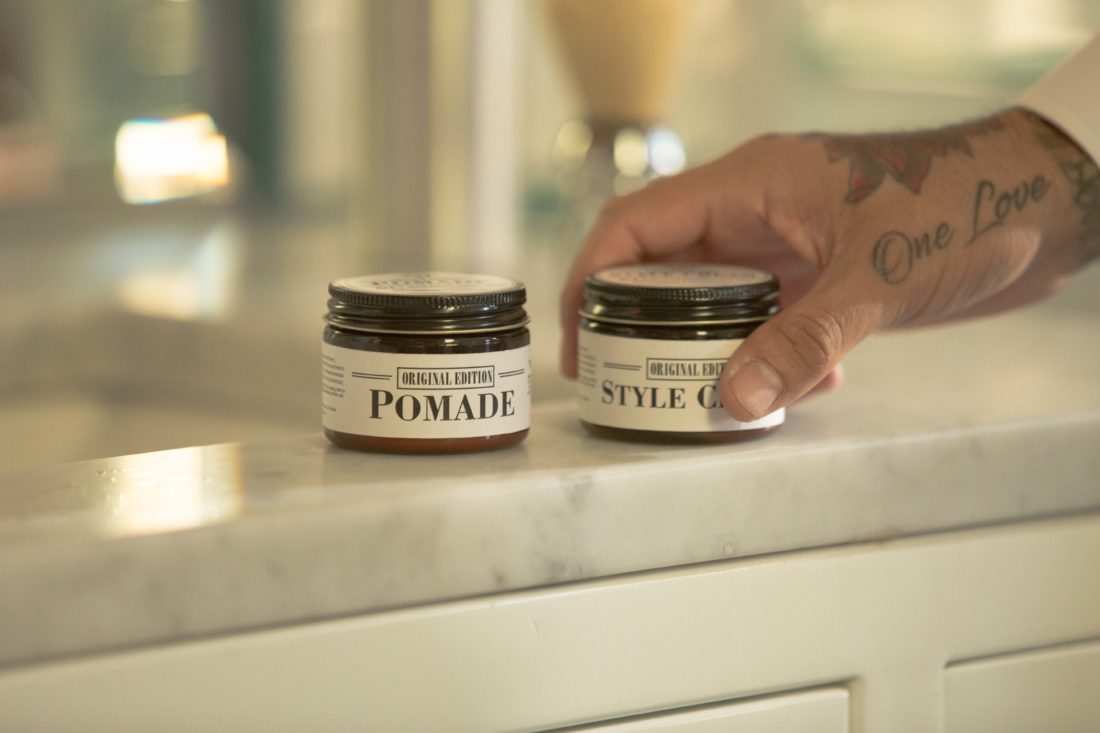
How to apply pomade
You finally watched Mad Men, and thought Don Draper looked pretty dapper with that pomade in his hair, but you haven’t the first clue how it all works? As usual, you’ve come to the right place. We got our Barbershop Manager, Frances Fernandez, to weigh in and give you in-depth advice on pomade. Let’s get into it.
WHAT STYLE ARE YOU GOING FOR?
The first order of business is – you guessed it – your desired style. Here are the questions Frances recommends you ask yourself before you do anything else. How heavy do I want my hair to feel? Do I want to be able to run my hands through it? Am I going for a natural finish or do I want it to be very shiny?
Once you’ve given it some real thought, you’re ready to choose a pomade.
TYPES OF POMADES
There are three main types of pomades:
Dry (matte) Pomade: typically for thin hair. Dry pomades help create the appearance of thicker, fuller hair. You can also use this type of pomade to add texture to short, cropped hair by roughening up the ends with your fingertips.
Cream (matte or high sheen) Pomade: typically for dense, unruly hair. Cream pomades make it easier to manipulate thick hair into your desired shape and style. These pomades have a similar consistency to that of conditioner.
Wet/Gel Pomade: designed to create a classic shiny, high-hold hairstyle. You can slick the hair back or use a comb to part it to one side.
Within each category, you will find a range of holds: medium, strong, extra-strong, etc.
WHAT MAKES A GOOD POMADE?
“Quality of ingredients, and brand reputation,” Frances answers. “There are tons of petroleum-based pomades out there that will only set you back around $5, but these typically don’t wash out. You’d need dishwashing detergent, or even a little olive oil rinse.”
You should expect to pay between $20 and $40 for a quality pomade. Frances recommend you go all-in even as a newcomer to the pomade game, because “compromising on quality can have negative repercussions on hair preservation. Using cheap, low-quality ingredients now can mean hair loss in the long run.”
In fact, the only pomades on the market specifically designed to actively fortify, heal and maintain hair are Barber Surgeons Guild products like our HCO1 Pomade. Pick one up here.
HOW TO APPLY POMADE
The best time to apply pomade is right after towel-drying it, so it can maintain the shape it has when wet and combed into place. Grab a small dollop of pomade and warm it by rubbing it between your hands for ease of application. Whatever you do, don’t apply it straight to the top of your scalp.
“In my experience,” Frances tells us, “most products accelerate hair loss due to the fact that they are made with the purpose of holding hair in a desired position versus the focus being on maintaining hair health while also functioning as a styling product. For this reason, my advice has always been to apply the pomade to the sides and back and whatever is left over to the top, then comb through.”
Of course, how and when you apply the pomade will yield different results. To get a slick, wet look, apply pomade generously while the hair is still damp. You can also get a mild hold without the wet look if you apply a small amount to damp hair, then comb it through when completely dry. Apply a tiny amount to dry hair to get a nice sheen going.
DON’T LOSE ANY HAIR OVER THIS
At the end of the day, it all comes down to your personal preference, and there will be a healthy amount of trial and error if you’re just beginning to experiment with pomade. Pomades are often scented, so try to pick one whose smell you and others around you will enjoy. And if you don’t want to have to worry about your pomade causing hair loss, then look no further than Barber Surgeons Guild pomade.
